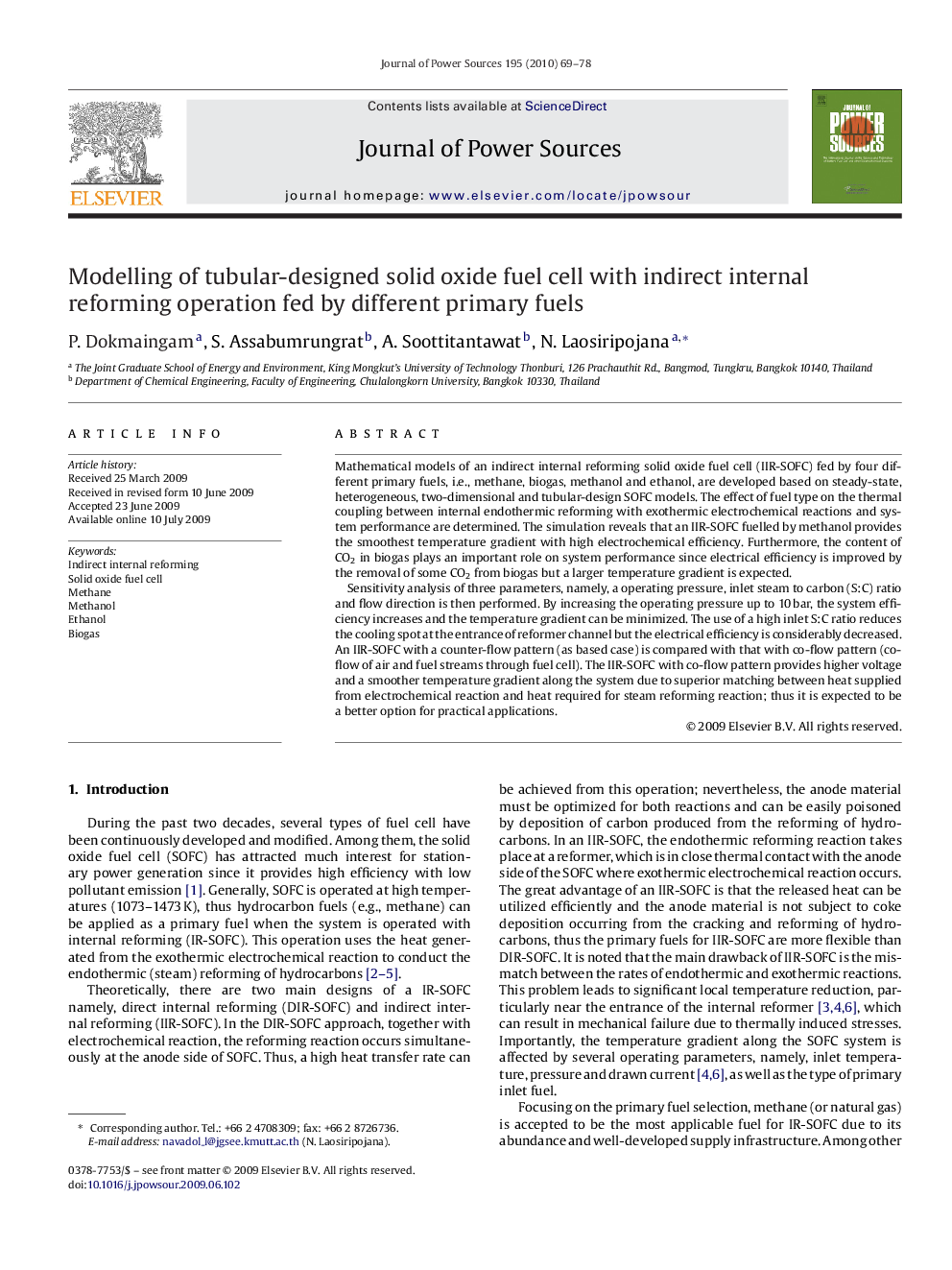| Article ID | Journal | Published Year | Pages | File Type |
|---|---|---|---|---|
| 1293949 | Journal of Power Sources | 2010 | 10 Pages |
Mathematical models of an indirect internal reforming solid oxide fuel cell (IIR-SOFC) fed by four different primary fuels, i.e., methane, biogas, methanol and ethanol, are developed based on steady-state, heterogeneous, two-dimensional and tubular-design SOFC models. The effect of fuel type on the thermal coupling between internal endothermic reforming with exothermic electrochemical reactions and system performance are determined. The simulation reveals that an IIR-SOFC fuelled by methanol provides the smoothest temperature gradient with high electrochemical efficiency. Furthermore, the content of CO2 in biogas plays an important role on system performance since electrical efficiency is improved by the removal of some CO2 from biogas but a larger temperature gradient is expected.Sensitivity analysis of three parameters, namely, a operating pressure, inlet steam to carbon (S:C) ratio and flow direction is then performed. By increasing the operating pressure up to 10 bar, the system efficiency increases and the temperature gradient can be minimized. The use of a high inlet S:C ratio reduces the cooling spot at the entrance of reformer channel but the electrical efficiency is considerably decreased. An IIR-SOFC with a counter-flow pattern (as based case) is compared with that with co-flow pattern (co-flow of air and fuel streams through fuel cell). The IIR-SOFC with co-flow pattern provides higher voltage and a smoother temperature gradient along the system due to superior matching between heat supplied from electrochemical reaction and heat required for steam reforming reaction; thus it is expected to be a better option for practical applications.
